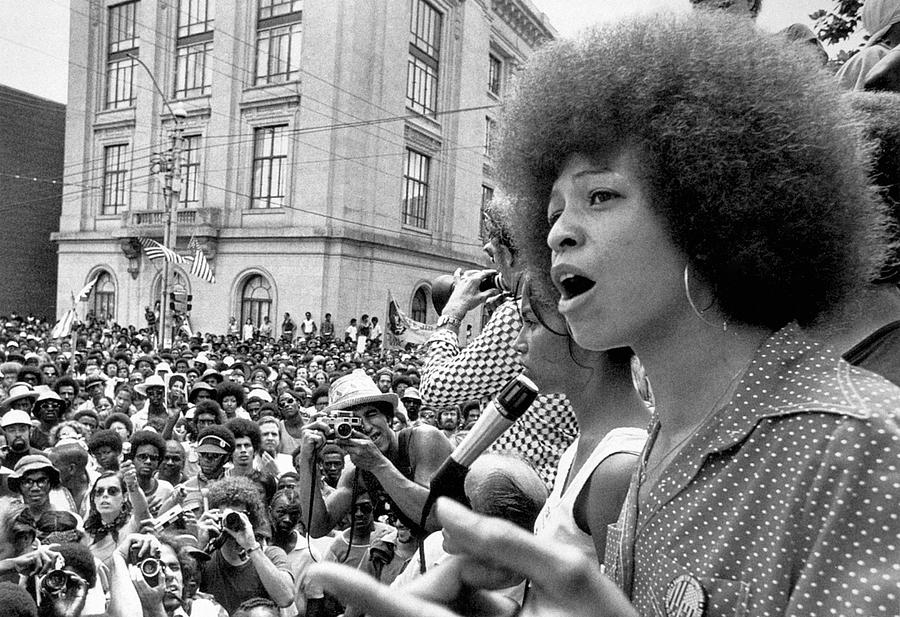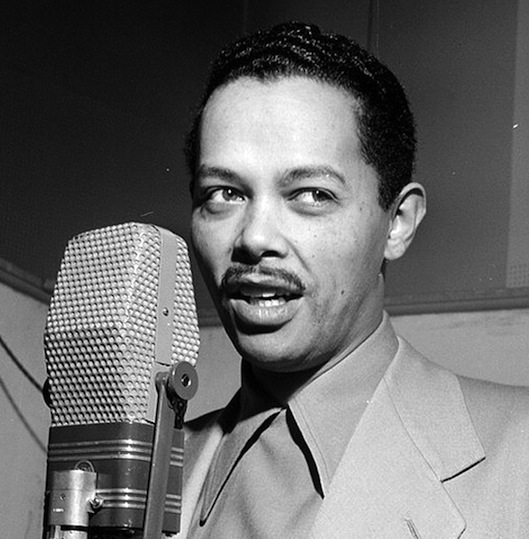Back on the air
books, computers, everyday glory, family and friends, food for thought, football, games, geekery, history, kids, LEGO and Rokenbok, movies and TV, people, politics and law, science and technology, the world February 6th, 2013Wednesday – 06 February 2013
Not only is it midweek…
Nor is it just new comics day…
Or even Movie Date Night with Sara!…
Today is my niece, Grace’s, fifth birthday:
I first met Grace about a week after she was born. Since then (and mostly through the marvels of modern technology), I have watched as she’s grown into a lovely, fun, and very precocious little girl:
Chew on This: Food for Thought – Black History Month
Since I’m a few days behind, it’s time to play “catch up” with our people of interest:
- George Washington Carver
 George Washington Carver (by January 1864 – January 5, 1943), was an American scientist, botanist, educator, and inventor.Carver was born into slavery in Diamond Grove, Newton County, near Crystal Place, now known as Diamond, Missouri, possibly in 1864 or 1865, though the exact date is not known. His master, Moses Carver, was a German American immigrant. Carver had 10 sisters and a brother, all of whom died prematurely.
George Washington Carver (by January 1864 – January 5, 1943), was an American scientist, botanist, educator, and inventor.Carver was born into slavery in Diamond Grove, Newton County, near Crystal Place, now known as Diamond, Missouri, possibly in 1864 or 1865, though the exact date is not known. His master, Moses Carver, was a German American immigrant. Carver had 10 sisters and a brother, all of whom died prematurely.
After slavery was abolished, Moses Carver and his wife Susan raised George and his older brother James as their own children. They encouraged George to continue his intellectual pursuits, and “Aunt Susan” taught him the basics of reading and writing.Black people were not allowed at the public school in Diamond Grove. Learning there was a school for black children 10 miles (16 km) south in Neosho, George decided to go there. When he reached the town, he found the school closed for the night. He slept in a nearby barn. By his own account, the next morning he met a kind woman, Mariah Watkins, from whom he wished to rent a room. When he identified himself as “Carver’s George,” as he had done his whole life, she replied that from now on his name was “George Carver”. George liked this lady very much, and her words, “You must learn all you can, then go back out into the world and give your learning back to the people”, made a great impression on him. At the age of thirteen, due to his desire to attend the academy there, he relocated to the home of another foster family in Fort Scott, Kansas. After witnessing a black man killed by a group of whites, Carver left the city. He attended a series of schools before earning his diploma at Minneapolis High School in Minneapolis, Kansas.
Carver applied to several colleges before being accepted at Highland College in Highland, Kansas. When he arrived, however, they rejected him because of his race. In 1890, Carver started studying art and piano at Simpson College in Indianola, Iowa. His art teacher, Etta Budd, recognized Carver’s talent for painting flowers and plants; she encouraged him to study botany at Iowa State Agricultural College in Ames. When he began in 1891, he was the first black student, and later taught as the first black faculty member.
When he completed his B.S., professors Joseph Budd and Louis Pammel convinced Carver to continue at Iowa State for his master’s degree. Carver did research at the Iowa Experiment Station under Pammel during the next two years. His work at the experiment station in plant pathology and mycology first gained him national recognition and respect as a botanist.
Booker T. Washington, the principal of the African-American Tuskegee Institute, hired Carver to run the school’s agricultural department in 1896. Washington lured the promising young botanist to the institute with a hefty salary and the promise of two rooms on campus, while most faculty members lived with a roommate. Carver’s special status stemmed from his accomplishments and reputation, as well as his degree from a prominent institution not normally open to black students. One of Carver’s duties was to administer the Agricultural Experiment Station farms. He had to manage the production and sale of farm products to generate revenue for the Institute. He soon proved to be a poor administrator. In 1900, Carver complained that the physical work and the letter-writing required were too much.
Carver’s research and innovative educational extension programs were aimed at inducing farmers to utilize available resources to replace expensive commodities. He published bulletins and gave demonstrations on such topics as using native clays for paints, increasing soil fertility without commercial fertilizers, and growing alternative crops along with the ubiquitous cotton. To enhance the attractiveness of such crops as cow peas, sweet potatoes, and peanuts, Carver developed a variety of uses for each. Peanuts especially appealed to him as an inexpensive source of protein that did not deplete the soil as much as cotton did.
Carver’s work with peanuts drew the attention of a national growers’ association, which invited him to testify at congressional tariff hearings in 1921. That testimony as well as several honors brought national publicity to the “Peanut Man.” A wide variety of groups adopted the professor as a symbol of their causes, including religious groups, New South boosters, segregationists, and those working to improve race relations.
From 1933 to 1935, Carver worked to develop peanut oil massages to treat infantile paralysis (polio). Ultimately researchers found that the massages, not the peanut oil, provided the benefits of maintaining some mobility to paralyzed limbs. From 1935 to 1937, Carver participated in the USDA Disease Survey. Carver had specialized in plant diseases and mycology for his master’s degree.
In 1937, Carver attended two chemurgy conferences, an emerging field in the 1930s, during the Great Depression and the Dust Bowl, concerned with developing new products from crops. He was invited by Henry Ford to speak at the conference held in Dearborn, Michigan, and they developed a friendship. That year Carver’s health declined, and Ford later installed an elevator at the Tuskegee dormitory where Carver lived, so that the elderly man would not have to climb stairs.
Carver had been frugal in his life, and in his seventies established a legacy by creating a museum on his work and the George Washington Carver Foundation at Tuskegee in 1938 to continue agricultural research. He donated nearly $60,000 in his savings to create the foundation.
Carver took a bad fall down a flight of stairs; he was found unconscious by a maid who took him to a hospital. Carver died January 5, 1943, at the age of 78 from complications (anemia) resulting from this fall. He was buried next to Booker T. Washington at Tuskegee University.
- Angela Davis

Writer, activist, educator. Born on January 26, 1944, in Birmingham, Alabama. Angela Davis is best known as a radical African American educator and activist for civil rights and other social issues. She knew about racial prejudice from her experiences with discrimination growing up in Alabama. As a teenager, Davis organized interracial study groups, which were broken up by the police. She also knew several of the young African American girls killed in the Birmingham church bombing of 1963.Angela Davis later moved north and went to Brandeis University in Massachusetts where she studied philosophy with Herbert Marcuse. As a graduate student at the University of California, San Diego, in the late 1960s, she joined several groups, including the Black Panthers. But she spent most of her time working with the Che-Lumumba Club, which was all-black branch of the Communist Party.Hired to teach at the University of California, Los Angeles, Angela Davis ran into trouble with the school’s administration because of her association with communism. They fired her, but she fought them in court and got her job back. Davis still ended up leaving when her contract expired in 1970.Outside of academia, Angela Davis had become a strong supporter of three prison inmates of Soledad Prison known as the Soledad brothers (they were not related). These three men—John W. Cluchette, Fleeta Drumgo, and George Lester Jackson—were accused of killing a prison guard after several African American inmates had been killed in a fight by another guard. Some thought these prisoners were being used as scapegoats because of the political work within the prison.
During Jackson’s trial in August 1970, an escape attempt was made and several people in the courtroom were killed. Angela Davis was brought up on several charges, including murder, for her alleged part in the event. There were two main pieces of evidence used at trial: the guns used were registered to her, and she was reportedly in love with Jackson. After spending roughly 18 months in jail, Davis was acquitted in June 1972.
After spending time traveling and lecturing, Angela Davis returned to teaching. Today, she is a professor at the University of California, Santa Cruz, where she teaches courses on the history of consciousness. Davis is the author of several books, includingWomen, Race, and Class (1980) and Are Prisons Obsolete? (2003).
- Billy Eckstine

William Clarence Eckstine (July 8, 1914 – March 8, 1993) was an American singer of ballads and a bandleader of the swing era. Eckstine’s smooth baritone and distinctive vibrato broke down barriers throughout the 1940s, first as leader of the original bop big-band, then as the first romantic black male in popular music. Eckstine’s recording of “I Apologize” (MGM Pop Single, 1948) was inducted into the Grammy Hall of Fame Award in 1999.
Eckstine was born in Pittsburgh, Pennsylvania; a State Historical Marker is placed at 5913 Bryant St, Highland Park, Pittsburgh, Pennsylvania, to mark the house where he grew up. Later moving to Washington, D.C., Eckstine began singing at the age of seven and entered many amateur talent shows. He attended Armstrong High School, St. Paul Normal and Industrial School, and Howard University. He left Howard in 1933, after winning first place in an amateur talent contest.
After working his way west to Chicago, Eckstine joined Earl Hines’ Grand Terrace Orchestra in 1939, staying with the band as vocalist and, occasionally, trumpeter, until 1943. By that time, he had begun to make a name for himself through the Hines band’s radio shows with such juke-box hits as “Stormy Monday Blues” and his own “Jelly Jelly.”In 1944, Eckstine formed his own big band and made it a fountainhead for young musicians who would reshape jazz by the end of the decade, including Dizzy Gillespie, Dexter Gordon, Miles Davis, Art Blakey, Charlie Parker, and Fats Navarro. Tadd Dameron and Gil Fuller were among the band’s arrangers, and Sarah Vaughan gave the vocals a contemporary air. The Billy Eckstine Orchestra was the first bop big-band, and its leader reflected bop innovations by stretching his vocal harmonics into his normal ballads. Despite the group’s modernist slant, Eckstine hit the charts often during the mid 1940s, with Top Ten entries including “A Cottage for Sale” and “Prisoner of Love”. On the group’s frequent European and American tours, Eckstine, popularly known as Mr. B, also played trumpet, valve trombone and guitar.Dizzy Gillespie, in reflecting on the band in his 1979 autobiography To Be or Not to Bop, gives this perspective: “There was no band that sounded like Billy Eckstine’s. Our attack was strong, and we were playing bebop, the modern style. No other band like this one existed in the world.”
After a few years of touring with road-hardened be-boppers, Eckstine became a solo performer in 1947, and seamlessly made the transition to string-filled balladry. He recorded more than a dozen hits during the late 1940s, including “My Foolish Heart” and “I Apologize.” He was one of the first artists to sign with the newly-established MGM Records, and had immediate hits with revivals of “Everything I Have Is Yours” (1947), Richard Rodgers’ and Lorenz Hart’s “Blue Moon” (1948), and Juan Tizol’s “Caravan” (1949).
Eckstine had further success in 1950 with Victor Young’s theme song to “My Foolish Heart” and a revival of the 1931 Bing Crosby hit, “I Apologize”. However, unlike Nat “King” Cole (who followed him into the pop charts), Eckstine’s singing, especially his exaggerated vibrato, sounded increasingly mannered and he was unable to sustain his recording success throughout the decade.
While enjoying success in the middle-of-the-road and pop fields, Eckstine occasionally returned to his jazz roots, recording with Vaughan, Count Basie and Quincy Jones for separate LPs, and he regularly topped the Metronome and Down Beat polls in the Top Male Vocalist category: He won Esquire magazine’s New Star Award in 1946; the Down Beat magazine Readers Polls from 1948 to 1952; and the Metronome magazine award as “Top Male Vocalist” from 1949 to 1954.
Eckstine was a style leader and noted sharp dresser. He designed and patented a high roll collar that formed a “B” over a Windsor-knotted tie, which became known as a “Mr. B. Collar”. The collars were worn by many a hipster in the late 1940s and early 1950s. Legend has it that his refined appearance even had an effect on trumpeter Miles Davis. Once, when Eckstine came across a disheveled Davis in the depths of his heroin excess, his remark “Looking sharp, Miles” served as a wake-up call for Davis, who promptly returned to his father’s farm in the winter of 1953 and finally kicked the habit.
In 1984 Billy recorded his final album I Am a Singer. Eckstine died on March 8, 1993, aged 78.
- Mary Fields
 Mary Fields, also known as Stagecoach Mary, was the first African-American woman employed as a mail carrier in the United States, and just the second American woman to work for the United States Postal Service.
Mary Fields, also known as Stagecoach Mary, was the first African-American woman employed as a mail carrier in the United States, and just the second American woman to work for the United States Postal Service.
Born a slave circa 1832 in Hickman County, Tennessee, Fields was freed when American slavery was outlawed in 1865. She then worked in the home of Judge Edmund Dunne. When Dunne’s wife died, Fields took the family’s five children to their aunt, Mother Mary Amadeus, a nun at an Ursuline convent in Toledo. Mother Amadeus was sent to Montana Territory to establish St. Peter’s Mission, a school for Native American girls. Word came back that Amadeus was ill, and Fields hurried to Montana to nurse her. After Amadeus recovered, Fields stayed at St. Peter’s hauling freight, doing laundry, growing vegetables, tending chickens, repairing buildings, and eventually becoming the forewoman.
The Native Americans called Fields “White Crow” because “she acts like a white woman but has black skin.” Local whites didn’t know what to make of her. One schoolgirl wrote an essay saying “she drinks whiskey, and she swears, and she is a republican, which makes her a low, foul creature.” In 1894, after several complaints, the bishop ordered her to leave the convent.
Mother Amadeus helped her open a restaurant in nearby Cascade. Fields would serve food to anyone, whether they could pay or not, and the restaurant went broke in about ten months.
In 1895, although approximately 60 years old, Fields was hired as a mail carrier because she was the fastest applicant to hitch a team of six horses. She drove the route with horses and a mule named Moses. She never missed a day, and her reliability earned her the nickname “Stagecoach.” If the snow was too deep for her horses, Fields delivered the mail on snowshoes, carrying the sacks on her shoulders.
Fields was a respected public figure in Cascade, and on her birthday each year the town closed its schools to celebrate. When Montana passed a law forbidding women to enter saloons, the mayor of Cascade granted her an exception.
Mary Fields died of liver failure in 1914. In 1959, actor and Montana native Gary Cooper wrote an article for Ebony in which he said, “Born a slave somewhere in Tennessee, Mary lived to become one of the freest souls ever to draw a breath, or a .38.”
Of course, this entry from Badass of the Week is where I first heard of Stagecoach Mary – and knew that she’d be filling the “F” slot in this year’s Black History Month list.
Stray Toasters
- Yesterday, I watched some of the live feed of the Raven’s celebratory parade and stadium celebration. I also realized that it was possibly THE last time that I would get to see this:…until I realized that there are possibly two more chances to see it: The retirement of Ray’s jersey/number and when the Ravens receive their Super Bowl rings.
- Last night, I watched a recording of Pioneers of Television: Superheroes. It was a well-done program, consisting of clips from old shows and interviews with some of the stars. I enjoyed hearing the actors talk about the ups and downs of portraying heroes and how it affected them and their careers. You can watch the episode here; I recommend it, and will be watching other episodes of this series.
- British House of Commons Approves Gay Marriage
- Twitter succumbs to “extremely sophisticated” attack
- Pixel-by-pixel map of Zelda’s Hyrule built from LEGO
- Pulp-O-Mizer

- Avengers/Breakfast Club mash-up
- Postal Service plans to end Saturday mail delivery by August
Back to it.
Namaste.
Leave a Reply
You must be logged in to post a comment.



